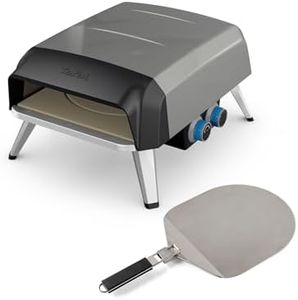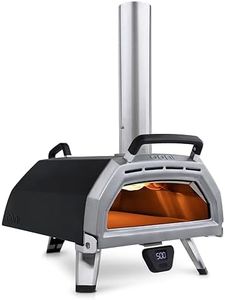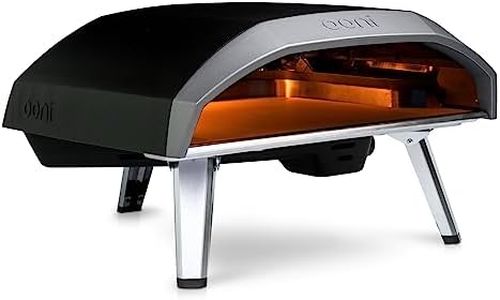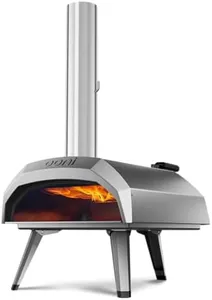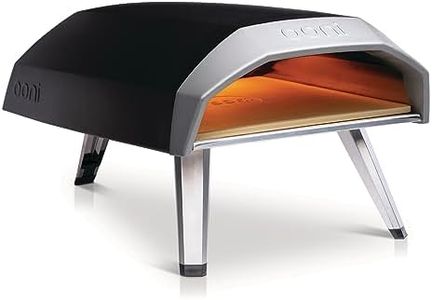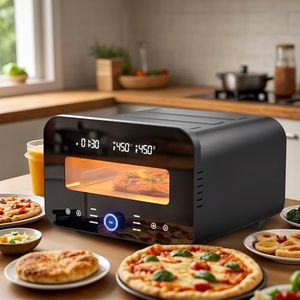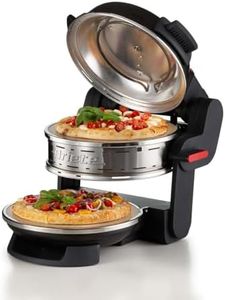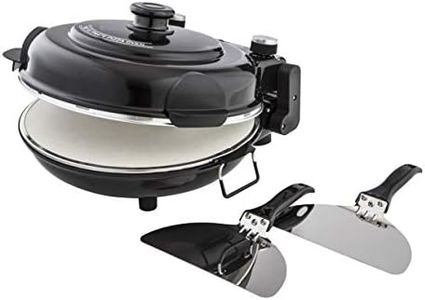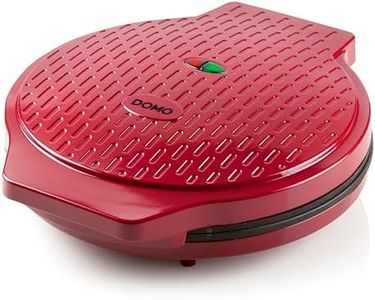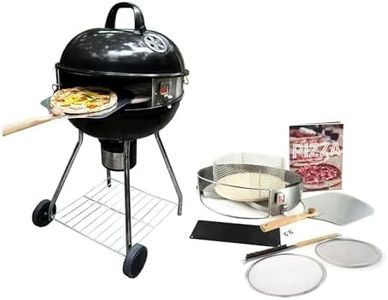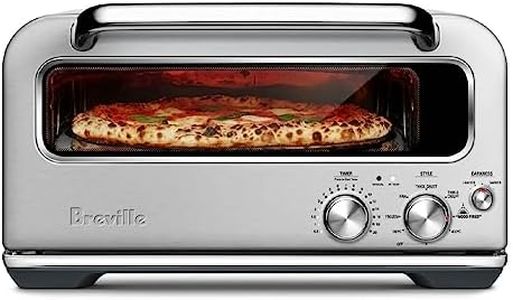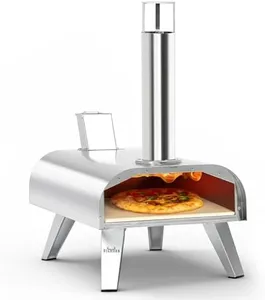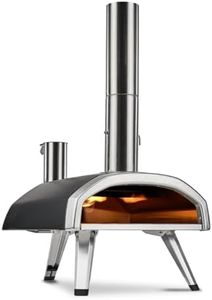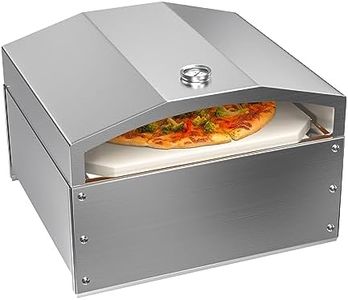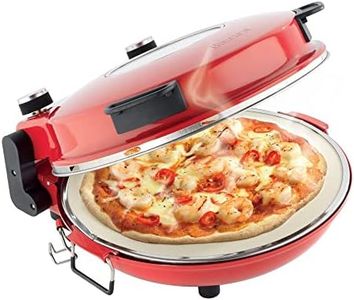We Use CookiesWe use cookies to enhance the security, performance,
functionality and for analytical and promotional activities. By continuing to browse this site you
are agreeing to our privacy policy
10 Best Pizza Ovens
From leading brands and best sellers available on the web.Buying Guide for the Best Pizza Ovens
Choosing the right pizza oven can make a big difference in the quality and experience of your homemade pizzas. The type of oven you select will influence how your pizza tastes, how quickly it cooks, and how easy it is for you to use and maintain. To find the best pizza oven for you, consider how often you plan to use it, where you will be cooking (indoors or outdoors), and your personal taste preferences when it comes to pizza style.Type of OvenThe type of pizza oven refers to the way the oven heats and cooks your pizza. There are wood-fired, gas-fired, charcoal, and electric pizza ovens. Wood-fired ovens are prized for their traditional flavor and very high heat, making them great for Neapolitan-style pizzas but they require practice and patience. Gas ovens heat quickly and are easy to use, offering consistent results with less manual effort. Electric ovens are convenient for indoor use but may not reach the highest temperatures and can produce a different crust. Charcoal ovens offer a unique smoky flavor but are less common. Think about the taste you want and how much effort you're willing to invest in cooking when choosing an oven type.
Maximum TemperatureMaximum temperature determines how hot your pizza oven can get. High temperatures (700°F/370°C and above) are great for classic, bubbly Neapolitan-style pizzas as they cook very quickly, usually in 1-2 minutes. Medium temperatures (500-700°F or 260-370°C) are more versatile, suitable for both crispy and chewy pizzas, and are easier for beginners to manage. Lower maximum temperatures (below 500°F or 260°C) will work for thicker-crust, pan, or deep-dish pizzas but may take longer to cook. Match the oven's maximum temperature to the style of pizza you most want to make.
Size and Cooking CapacityThe size of the pizza oven and its cooking surface tells you how large of a pizza you can make at once and how many. Smaller ovens are more portable and fit smaller spaces, typically making pizzas 10-12 inches in diameter, which is great for personal use or small gatherings. Larger ovens can handle multiple pizzas at a time or larger pies, which is useful for parties or big families but take up more space and require longer heating times. Consider how many people you usually cook for and how much room you have to dedicate to your pizza oven.
Heat-up TimeHeat-up time is how long it takes for the pizza oven to reach its optimal cooking temperature. Fast heat-up times, usually 15-30 minutes, are convenient if you want to make pizza on the spur of the moment and don't want to wait around. Longer heat-up times (over 30 minutes) might signal a larger oven or a wood-fired model, which requires more patience but rewards you with authentic flavor. Think about your schedule and how spontaneous you want your pizza-making to be.
Ease of Use and MaintenanceThis refers to how simple the oven is to operate, clean, and maintain. Simpler ovens, like gas or electric, often require just turning a dial and waiting for things to heat up, and they're usually easier to clean. Wood-fired or charcoal ovens can take more effort to light, manage, and clean out ashes, but they offer a traditional experience and unique flavor. Your willingness to handle cleaning and setup, as well as your comfort level with manual tasks, should help guide your choice here.
Portability and PlacementThis spec is about how easy it is to move or set up your pizza oven. Portable ovens are designed for easy transport and storage, ideal for small patios, balconies, or for taking to gatherings, while built-in or heavy stone ovens are permanent fixtures, best for those with dedicated outdoor cooking spaces. Assess whether you need to move your oven around or if it can stay in a single spot, and consider where you'll be cooking most often.
